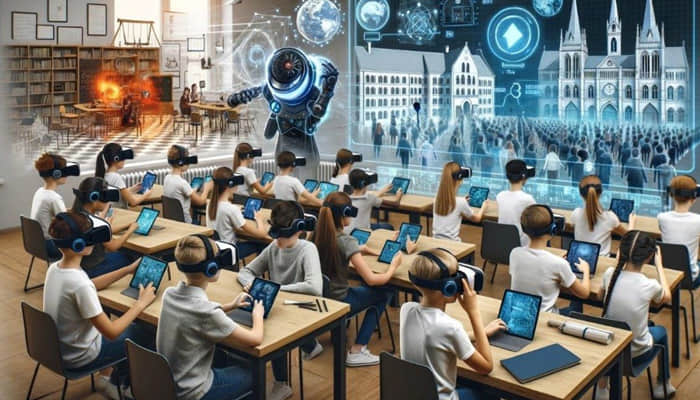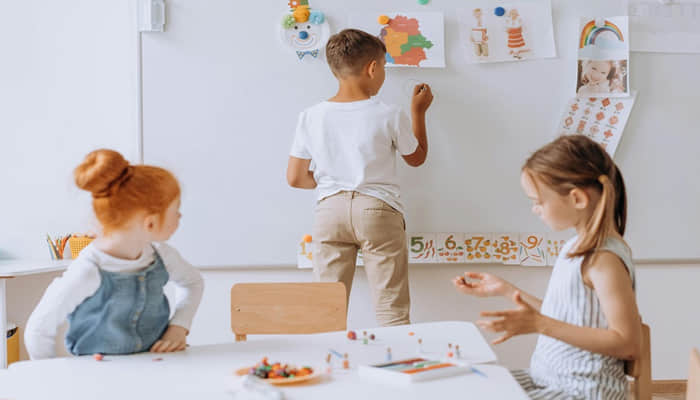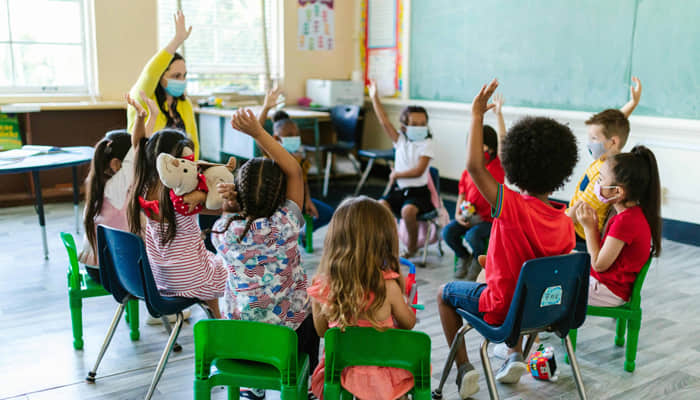
Imagine walking into a school in 2030. The bell rings, but instead of rushing to a classroom, students settle into flexible learning zones with virtual reality headsets, AI tutors, and collaborative digital whiteboards. Sounds like science fiction? Not really. The future of education is already taking shape—and it’s closer than you think.
Here’s what school could look like in 2030—and why it matters for students, parents, and educators alike.
1. Personalized Learning Powered by AI
By 2030, education will be highly personalized. Artificial intelligence will track each student’s strengths, weaknesses, and learning style, adjusting lessons in real time.
Imagine a math lesson where the system notices you struggle with fractions and automatically generates extra exercises tailored to your pace. Or a language app that predicts which words you’re likely to forget and reviews them before you even realize.
This means students won’t be forced into one-size-fits-all classrooms. Learning becomes smarter, more efficient, and—most importantly—less stressful.
2. Virtual and Augmented Reality in Every Classroom

Gone are the days of dusty textbooks and static diagrams. Virtual reality (VR) and augmented reality (AR) will immerse students in hands-on experiences.
History lessons might let students “walk” through ancient Rome.
Science labs could simulate chemical reactions without a single spilled beaker.
Geography could become an interactive journey across mountains, oceans, and deserts.
VR and AR make learning active and memorable, turning abstract concepts into experiences you can see, hear, and even “touch.”
3. Global Classrooms and Online Collaboration
By 2030, classrooms will no longer be limited by geography. Students from different countries can collaborate on projects in real time using virtual platforms.
Imagine a 10-year-old in Singapore working with peers in Brazil and Germany to design a sustainable city, sharing ideas across languages and cultures. This global exposure fosters empathy, creativity, and teamwork—skills that are essential in the 21st-century workplace.
4. Project-Based and Skill-Focused Learning

Traditional grading and memorization may become secondary. Schools will focus on skills, projects, and real-world problem solving.
Students might spend weeks developing apps, writing short films, or creating community initiatives instead of taking dozens of exams. Portfolios, rather than test scores, could become the main way to showcase abilities to colleges and employers.
Learning will be more meaningful because students see the impact of their work—and develop skills they will actually use in life.
5. Teachers as Mentors and Coaches
Even with advanced technology, teachers will remain essential—but their role will shift.
Instead of delivering lectures, teachers will guide, mentor, and support students in personalized ways. They will help students set goals, manage time, and reflect on their learning journey. Technology will handle repetitive tasks like grading, freeing teachers to focus on what humans do best: inspire, motivate, and nurture curiosity.
6. Health, Wellbeing, and Flexible Schedules
By 2030, schools will place greater emphasis on mental health and wellbeing. Flexible schedules, mindfulness programs, and physical activity will be integrated into the daily routine.
Students may have more control over when and how they learn, balancing academics with creative projects, social interaction, and rest. After all, research shows that happy, healthy students are better learners.
7. Lifelong Learning Starts Early

The pace of change in the world means learning doesn’t stop at graduation. Schools in 2030 will instill a habit of lifelong learning.
Students might learn coding, financial literacy, or AI ethics alongside traditional subjects.
Learning platforms will be accessible outside school hours, allowing curiosity to flourish anytime.
Education becomes less about memorizing facts and more about teaching students how to adapt, solve problems, and keep learning throughout life.
8. Equity and Access Through Technology
One of the biggest challenges today is inequality in education. By 2030, technology could help bridge this gap.
Affordable devices, cloud-based learning platforms, and AI tutors could give students in remote or underfunded areas access to the same resources as those in top schools. While technology alone won’t solve all problems, it has the potential to make high-quality education more inclusive and accessible.
Final Thoughts
The school of 2030 will be less about rigid schedules, standardized tests, and crowded classrooms. It will be more personalized, immersive, skill-focused, and globally connected. Students will learn at their own pace, explore their interests, and gain practical skills for an ever-changing world.
While technology will drive much of this transformation, human guidance, mentorship, and emotional support will remain at the heart of education.
Whether you’re a parent, teacher, or student, one thing is clear: the future of school is exciting, adaptive, and full of possibilities. And the best part? It’s already starting today.
The schools of 2030 won’t just teach subjects—they’ll teach students how to learn, adapt, and thrive in a rapidly changing world.
